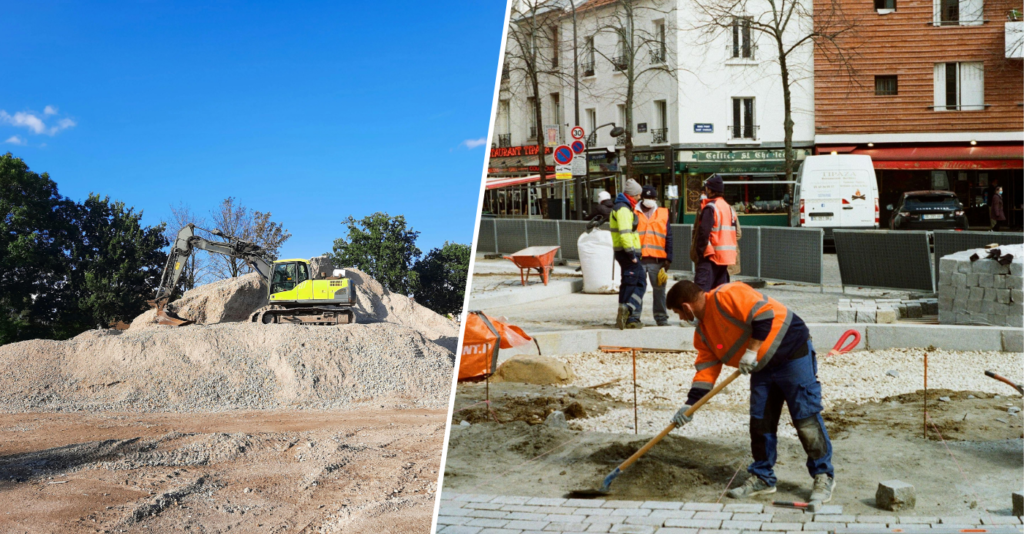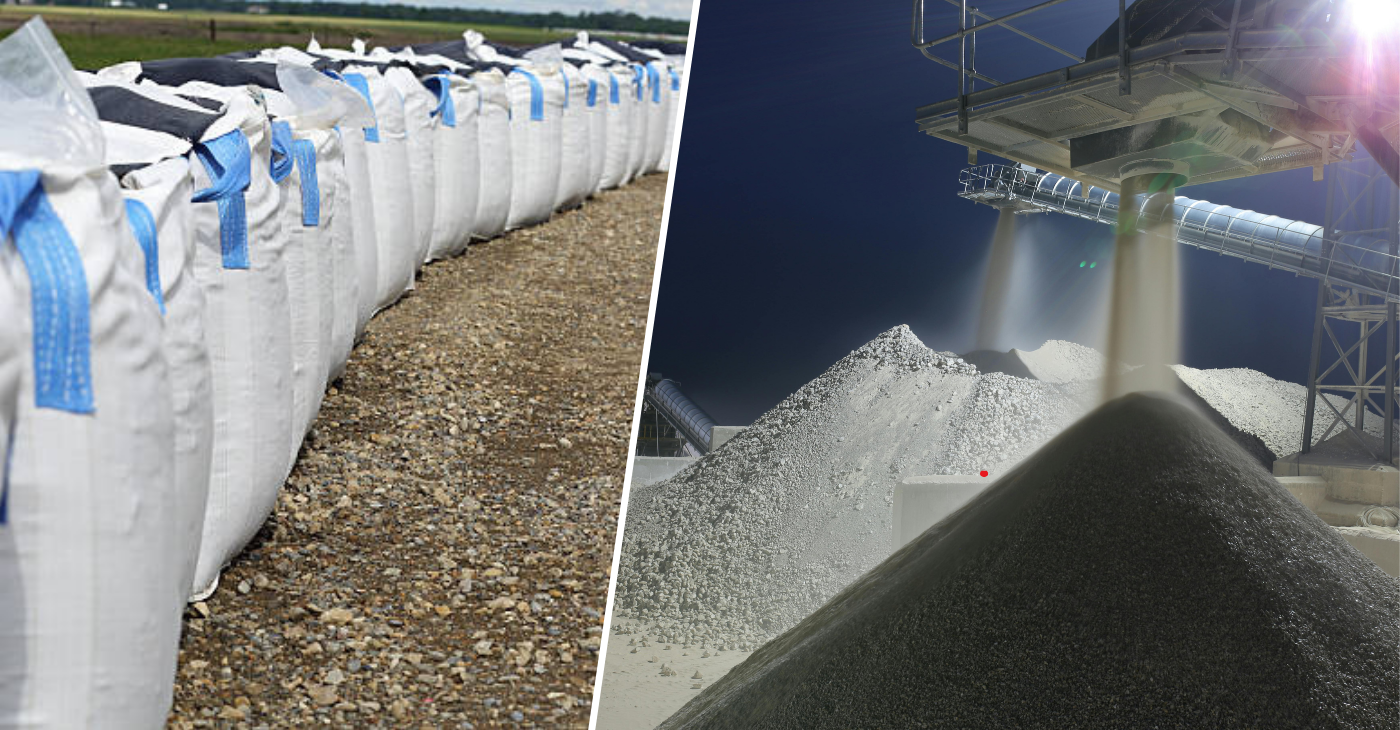Bulk sand bags – The affordable construction solution
Bulk sand bags are incredibly versatile and budget-friendly. They’re used for all sorts of tasks, from construction projects and home improvement to even flood protection. But how exactly do they work, types of sand and how much coverage does a single bag provide? In this guide, we’ll explore everything you need to know about bulk sand bag and why they’ve become the go-to solution for both construction professionals and DIY enthusiasts alike.
What are bulk sand bags?
Bulk sand bags are large, durable sacks made from materials like woven polypropylene, designed to carry significant amounts of sand or other loose materials. These bags are essential for a variety of tasks, from transporting materials to stabilising structures, offering a quick and economical solution for different construction needs. One of the main advantages of sharp sand bulk bag is their versatility, they can be used for tasks as varied as flood control, ground stabilisation, and even landscaping.
What types of sand are available in bulk sand bags?
Not all sand is created equal, and the type of sand you choose for your project can significantly affect the results. Here are some common types of sand that are typically available in building sand bulk bags:
- Builder’s sand (Sharp sand): This type of sand is coarse, often used for laying bricks, making mortar, and general construction work. Its gritty texture makes it ideal for creating strong and durable mixes.
- Soft sand (Masonry sand): Softer and finer than builder’s sand, this type is commonly used for plastering, rendering, and pointing brickwork. It’s also ideal for areas that require a smooth finish.
- Play sand: A finer grade of sand used in playgrounds or sandboxes, play sand is typically safe for children and is free from larger particles.
- River sand: River sand is naturally sourced and has a smooth, rounded texture. It’s often used for plastering or as a fine aggregate in concrete production.
- Gravel sand: A mix of sand and small stones, gravel sand is used primarily for drainage and concrete applications, as well as stabilising larger areas on construction sites.
How much sand is in a bulk sand bag?
The quantity of sand in a sharp sand bulk bag can vary depending on the size of the bag and the type of sand being used. Generally, a standard bulk sand bag holds around 850 to 1,000 kilograms (1 tonne) of sand. This amount is equivalent to approximately 0.5 to 0.6 cubic meters of sand.
For smaller projects or DIY tasks, you may also find sharp sand bulk bag that hold around 25kg to 50kg, which can be easier to handle. However, the larger sharp sand bulk bags offer better value for money, especially for bigger construction jobs.
How many bricks can one bulk sand bag cover?
When using bulk sand for bricklaying, one of the common questions is, “How many bricks can a bulk sand bag cover?” The answer depends on the type of sand and the thickness of the mortar layer, but a general estimate is that one tonne of sharp sand (used to make mortar) can lay around 1,000 bricks.
For typical mortar mixes, the ratio is often around 1 part cement to 4 parts sand, and a tonne of sand, when mixed with cement, can create enough mortar to cover approximately 1,000 standard-sized bricks.
If you’re working with blocks rather than bricks, this same amount of sand can lay approximately 300 to 400 concrete blocks, depending on the size and thickness of the blocks.
How much building sand do I need?
To calculate the amount of sand required for a construction site, you’ll need to follow a few steps based on the area, depth, and purpose of the sand. Here’s a simple guide to help with your sand calculation:
Steps for sand calculation:
- Measure the area:
- Multiply length by width.
- Example: 10m x 5m = 50 m².
- Determine depth:
- Choose the sand depth (e.g., 0.1m or 10cm).
- Calculate volume:
- Multiply area by depth.
- Example: 50m² x 0.1m = 5 m³.
- Convert to tonnes:
- Multiply volume by 1.6 (sand density).
- Example: 5m³ x 1.6 = 8 tonnes.
For a 10m x 5m site with 0.1m depth, you need 8 tonnes of sand.

How can bulk sand bags save you money?
Purchasing sand in bulk quantities can significantly reduce costs for large construction projects. Buying in bulk not only allows you to get a better price per tonne of sand but also reduces the frequency of reordering materials, which can save time and minimize delivery fees.
Additionally, sharp sand bulk bags are durable and reusable, allowing you to store any excess sand for future projects. This helps reduce waste and ensures that you’re getting the most value out of your purchase.
What are the most common uses in Construction?
Bulk sand bags are incredibly versatile, making them useful for a wide range of applications on construction sites. Some of the most common uses include:
- Bricklaying and masonry: The sand used for mortar is perfect for bricklaying. Its coarse texture ensures a strong bond between bricks, providing long-lasting durability.
- Flood control: Sandbags have long been used to protect homes and buildings from flooding. Sharp sand bulk bags provide an affordable, large-scale solution for quickly creating flood barriers.
- Ground stabilisation: Whether you’re preparing for heavy machinery or laying a foundation, building sand bulk bag can stabilise the ground by providing a solid base.
- Erosion control: Bulk sand bags can help protect areas that are prone to soil erosion. By strategically placing the bags, you can reduce the impact of rainwater and wind on the soil, preventing land degradation.
- Landscaping: For residential projects, sharp sand bulk bags are ideal for leveling ground, filling areas, and creating decorative sand features in gardens or sand used in patios.
Are bulk sand bags easy to transport and use?
Transporting large quantities of loose sand can be time-consuming and labor-intensive. However, sharp sand bulk bags make it much easier to move materials. These bags come with lifting straps, allowing them to be transported by forklifts or cranes on large construction sites. Even for smaller-scale projects, building sand bulk bag are easy to stack and store, making them a convenient option for various needs.
How can you ensure you’re buying the right bulk sand bags?
When purchasing sharp sand bulk bags, consider the following factors to make sure you’re getting the best value for your project:
- Size and capacity: Determine how much sand you’ll need and choose bags that can hold the appropriate amount. Larger bags may offer better value, while smaller bags are easier to handle for DIY projects.
- Type of sand: Select the type of sand based on your project requirements. Sharp sand is ideal for bricklaying, while soft sand is better suited for plastering or rendering.
- Supplier reputation: Be sure to buy from a trusted supplier who provides high-quality materials and offers bulk discounts or delivery services.
Conclusion: Why choose bulk sand bags for your construction needs?
Bulk sand bags provide an affordable, versatile, and practical solution for a variety of construction and home improvement projects. Whether you need them for bricklaying, ground stabilisation, or flood control, bulk sand bags are easy to transport, cost-effective, and available in different types of sand to suit your needs. By choosing sharp sand bulk bags, you can save money, reduce waste, and streamline your construction process.







